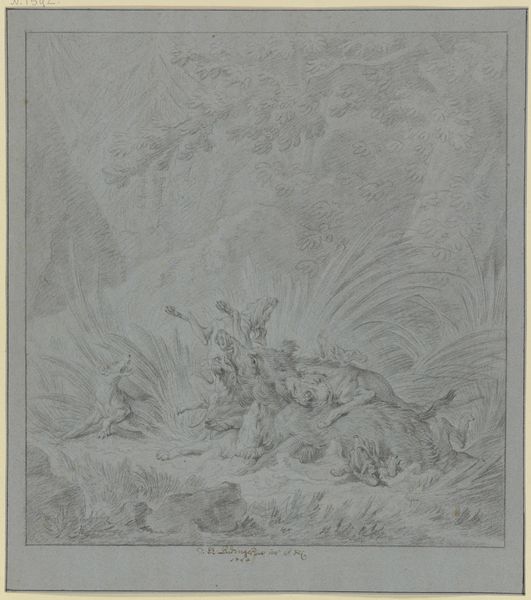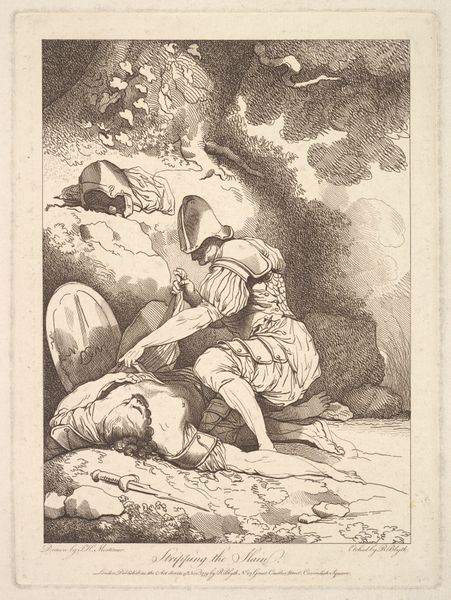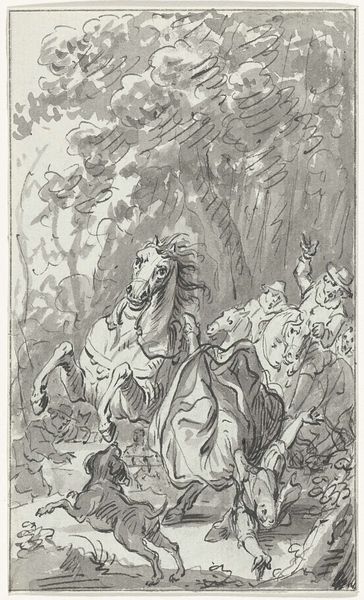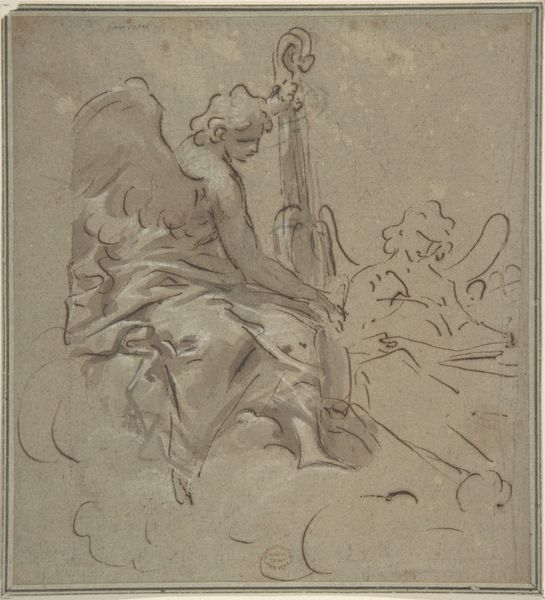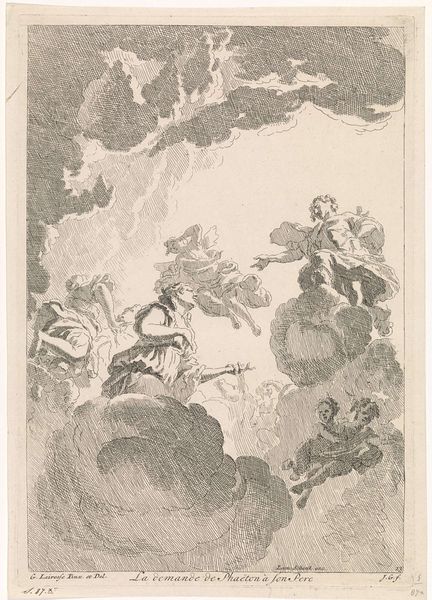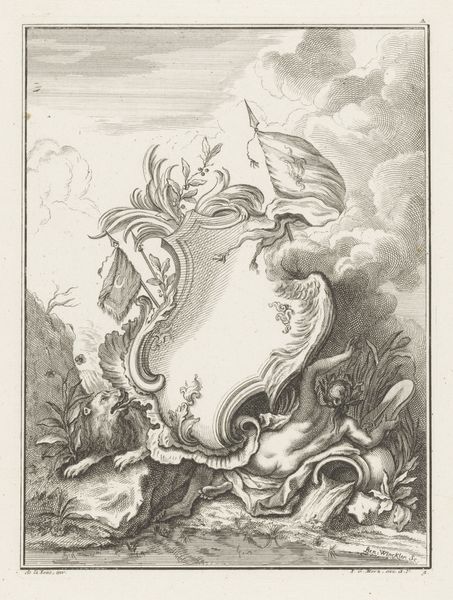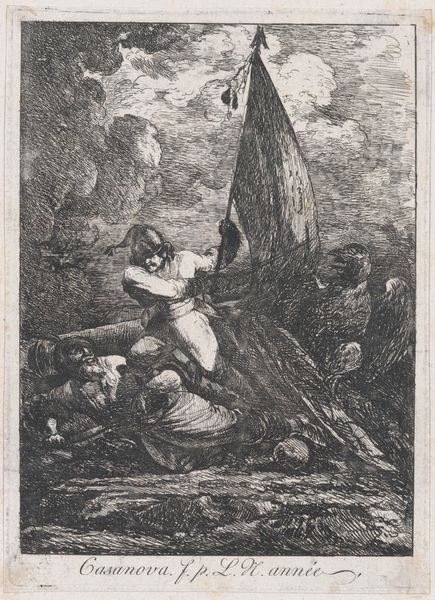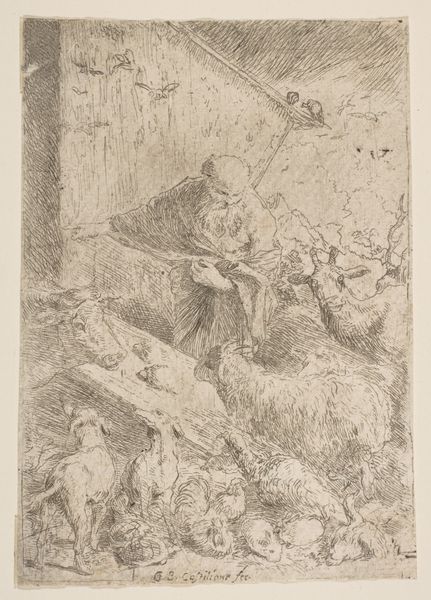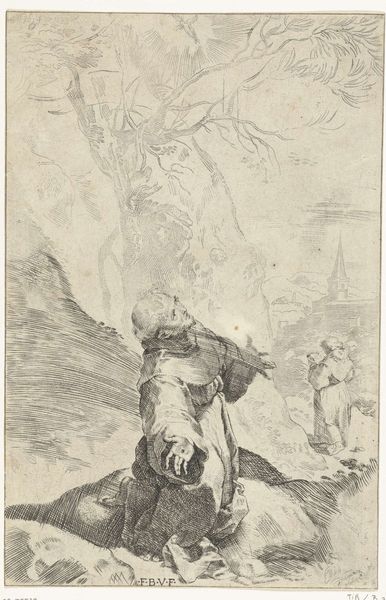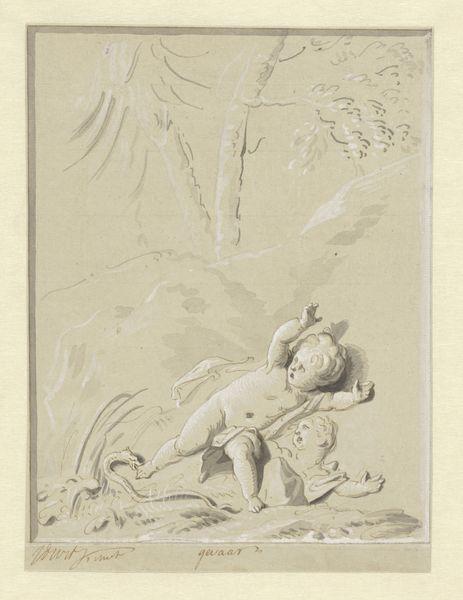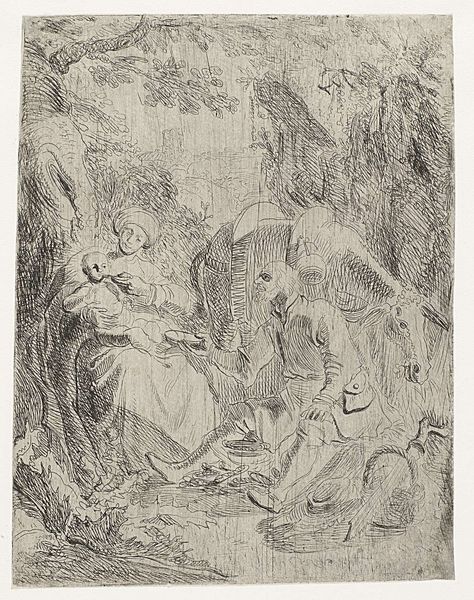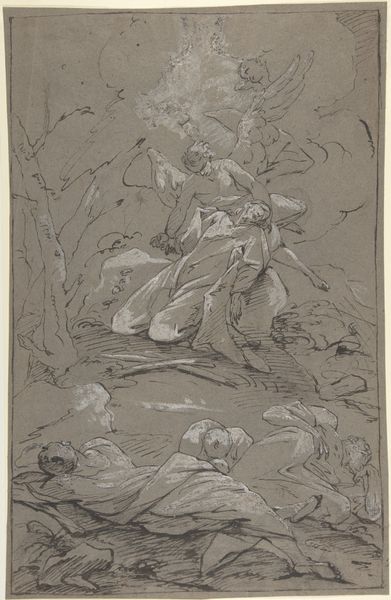
drawing, paper, pencil
#
drawing
#
narrative-art
#
baroque
#
pencil sketch
#
landscape
#
figuration
#
paper
#
pencil
#
history-painting
Dimensions: height 177 mm, width 147 mm
Copyright: Rijks Museum: Open Domain
Curator: This pencil drawing, "The Ascension of Elijah," was rendered on paper by Moses ter Borch in 1661 and currently resides in the Rijksmuseum. My first impression? It feels wonderfully theatrical, even dreamlike with the use of simple gray pencil. Editor: The ascension narratives, whether religious or secular, are always steeped in complex power dynamics. Elijah's ascent in a fiery chariot signifies a specific form of divine validation but let's ask: Validation for whom, and at what cost? Curator: Absolutely. Ter Borch captures that duality, I think. There's the obvious visual drama, the rearing horses, the chariot itself but there's also something very tender about the figure below. Almost overwhelmed. He's a tiny figure at the bottom, really! It adds this surprising feeling of humility. Editor: That 'humility' needs careful consideration. Who gets to be humbled? Elijah's ascent reinforces patriarchal power structures that have historically silenced and marginalized women, non-binary people, and those who do not conform to dominant religious ideologies. Curator: True but does that reading invalidate the, dare I say, "spiritual" or even psychological resonance of the piece? Perhaps Elijah's elevation is a symbolic journey toward enlightenment or transcendence – but not at the expense of social progress. I believe that artistic interpretation can embrace many diverse perspectives, each layered over one another. Editor: But isn't that sort of ahistorical reading part of the problem? Art history too often isolates artworks from their societal functions. Elijah's narrative serves as a historical document enforcing certain values, something Ter Borch couldn't help but communicate. We should analyze this artwork to decode those layers, challenge those functions. Curator: Perhaps we're each seeing two different sides of the same coin then. I’m captivated by the human element. Ter Borch really captures that fleeting feeling of witnessing something monumental. The other speaker is focused on power relations behind these images, the systems of oppression it evokes. Both are valuable! Editor: It's vital. Power seeps through even the subtlest lines. This drawing invites reflection on the systems we perpetuate, knowingly or otherwise.
Comments
No comments
Be the first to comment and join the conversation on the ultimate creative platform.

